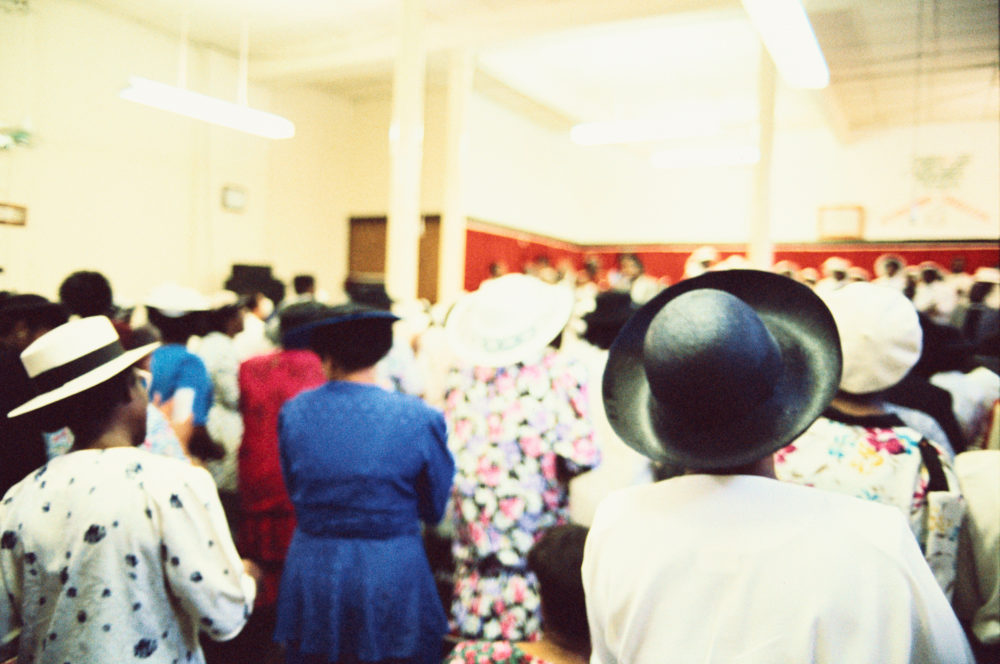Silent Tears
Annick Laurent | acl2220@columbia.edu

On a recent Sunday morning, the Sanctuary Choir at the Convent Avenue Baptist Church in Harlem sits relatively still, with the exception of those fanning themselves with the day’s programs. There are about 40 choir members, all dressed in bright blue robes with kente cloth embellishments sewn on the shoulders.
On the church floor, white-gloved ushers are guiding late comers across the wine-colored carpet to the few remaining spots in the roughly 1,000-seat church. Above the choir is an arch with the phrase “One Lord, One Faith, One Baptism,” painted on it in all caps.
Seconds later, Dr. Gregory Hopkins, the choir’s director, gives the singers the cue to rise to their feet. A familiar melody fiercely erupts from the organ. It is “Lift Every Voice and Sing” and it is sung by the choir with palpable pride to commemorate Black History Month and honor the souls of ancestors who fought for freedom.
The instrumental version of the first line plays once:
“Lift every voice and singgggg…”
Ed Broms, the organist, held on the note for “sing” in the opening line with a key on his left hand as his other one fluidly moves through the right side with ease. Light flute-like notes flutter in the air with quick succession, layered the deep “sing.”
Broms repeats the opening phrase a few more times, going higher on the scale with smooth transitions.
With the grace of a dancer, Hopkins raised his arms with pulsing wing-like motions to the beat of the spiritual. The choir followed his pace.
The first stanza is delivered in staccato fashion:
“Lift every voice and sing
Till earth and heaven ring
Ring with the harmonies of Liberty
Let our rejoicing rise
High as the list’ning skies, let it resound, loud as the rolling sea.”
The tenors and sopranos distinguish themselves in tone and delivery. The women repeat “lift every voice and sing” at the end of each line
“Sing a song full of faith that the dark past has taught us
Sing a song full of the hope that the present has brought us
Facing the rising sun of our new day begun
Let us march on, let us march on, ‘til victory is won”
Originally conceived in 1900 as a poem, “Lift Every Voice and Sing” was penned by James Weldon Johnson, who was a lawyer and high school principal before pursuing a writing career full-time. J. Rosamond Johnson added the music to the ballad five years later, giving its poignant lyrics a vivacious uplifting accompaniment. Their collaboration is often regarded by African Americans as the “Black National Anthem” in addition to being a hymn that calls on God for aid through strife and fatigue.
I am overwhelmed hearing it sung. The choir’s rendition takes me on a winding emotional rollercoaster. The preface is buoyant and encouraging in the first verse before it transforms into something reminiscent of a chant for steadily marching soldiers. It is a musical salute to the foreparents, acknowledgement of sacrifices along a rocky unrelenting treadmill of a path.
Greatly contrasting the thundering start, the next verse is a whisper by comparison.
We have come, we have come over a way
That with tears have been watered
We have come, we have come treading our path
Through the blood of the slaughtered,
Out from the gloomy past,
Where the white gleam of our bright star is cast.
“The slaughtered.” Unfallen tears put pressure on my eyes.
The notes become less divergent, almost meeting in the middle. The tune slows and takes a somber turn, embodying communal mourning.
God of our weary years,
God of our silent tears,
Thou who has by Thy might
Led us into the light,
Keep us forever in the path, we pray.
Lest our feet stray from the places,
Our God, where we met Thee,
Lest, our hearts drunk with the wine
Of the world, we forget Thee;
Shadowed beneath Thy hand,
May we forever stand.
True to our GOD,
True to our native land.”
The choir ended the song in a rich, dragging, reverberating “Amennnn.”
